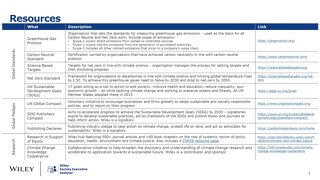looking-diverse-is-not-enough-how-the-society-for-research-in-child-development-implemented-real-inclusive-change
June 16, 2021
We are delighted to have a guest blog from Cynthia Garcia Coll, former editor of Child Development with the Society for Research in Child Development (SRCD), highlighting the work SRCD has been doing around their socio-cultural policies. Cynthia began working at SRCD nearly thirty years ago, hoping to accomplish one task – expanding science to be more representative of our world’s population. Here’s Cynthia.
When I became a senior editor of Child Development, I knew I had a monumental task in front of me. I had placed a proposal to the search committee and the Society for Research in Child Development (SRCD) Governing Council to transform this top journal into a representative venue of the diversity of the US population and the world. The history of the journal was one of publishing research in which deviant behavior was primarily represented through samples of BILPOC (Black, Indigenous, Latinx, and People of Color) while normative studies were based in white North American and /or European population samples.
Not surprisingly, the journal was reflecting the field at large. Although an interdisciplinary journal, the majority of us were psychologists. Not that long ago at the time, psychologists had been indicted for publishing mostly on WEIRD (White, Educated, Industrialized, Rich, Democratic) populations. I was intending to not only transform a top journal, but to go against the dominant tendencies in my field!
Start with the editor and the editorial board
Of course, I had to have my editorial board completely on board about our priorities: maintain our standards of excellence, theoretical and empirical, while creating new spaces and flexibility in areas where it was necessary if we wanted to change the field. For the six years of my editorship, we had the most geographic- and discipline-diverse group of associate editors in the history of the journal, representing every major region of the world and new areas of expertise never recruited before (i.e., anthropologists and economists).
The first year, we had virtual meetings every two-three months to engage in dialogue around our task: addressing the English-as-a-second language challenges of some international submissions, the need for statistical consultation, the tensions of having economists telling us that our sampling and data analyses were not providing reliable evidence for our conclusions, while anthropologists and linguists were telling us that small, unrepresentative samples were fine for newer areas of study. Interdisciplinary, international work needs to develop common language and understanding of the task at hand.
Continue with a task that we ALL have to do together, and approve
For me, it was appalling at the start of our journey to find out that there were no standards for prospective authors on how to describe the populations and samples, nor the statistical analyses. So that first year, as we diversified our consulting editors and reviewers database, we embarked on creating two new guidelines for authors: a sociocultural and a methodological reporting policy. Although some of us worked in the first drafts, ALL of us contributed and had to approve it at the end. Yes, we all had different areas of expertise, but we all had to agree on a set of standards – standards that would allow us to be cognizant of the issues around sampling and data analyses and see them through a lens of diversity rather than through a deficit model or a white privilege lens.
Be prepared for the backlash
All institutional and cultural change takes time, effort, and persistence. All journals have established cultural practices, and the challenge to the status quo is not welcomed by many. Why change established practices of a top journal? “Inclusion” … “diversity”? And so, during the first two years, we had many challenges from prominent authors and SRCD members who were outraged about who may now get rejected by our new/revised standards. The news traveled far and fast. We would be the talk of the town at conferences, small meetings, and societies activities.
Until the Impact Factor came out that reflected our work and it remained high, or in some years higher than ever before, the changes fueled micromanaging, questioning of our competency, even rumors of being dismissed. Again, editorial change needs a clear vision and the work of many, with the same goals. It takes time and persistence. And do not expect everybody to be supportive, even if they say so.
In the end
Child Development is not only producing the best scientific knowledge on the world childhood population in its very diverse living conditions, but it is contributing to the rise of a larger number of BILPOC scholars, who are now attaining tenure and senior promotions because their work is being published in a top journal. The research world is changing and so is our knowledge and our scholars. I hope that 100 years from now this will be old history. But for now, as singer/songwriter Bob Dylan once said…“the times they are changin’.”










